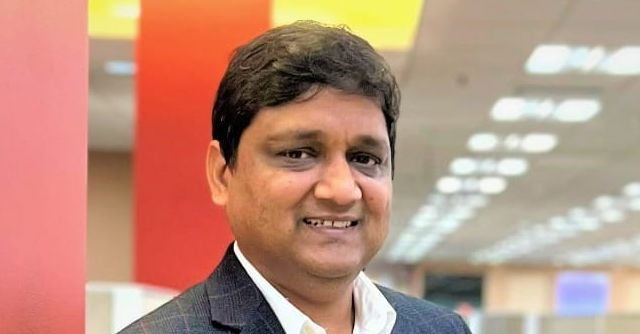
As India targets 10% of global chip demand by 2030, we aim for 10–15% of our sales here: NXP’s Hitesh Garg


In September, while speaking at the Semicon 2024 event in New Delhi, Prime Minister Modi set an ambitious target of growing electronics manufacturing in India to $500 billion in six years. This is about three times the current figures. It may be noted that India's own consumption of semiconductors is expected to cross $110 Billion by 2030.
This target presents a massive opportunity for semiconductor players in India, said NXP Semiconductors’ country manager for India Hitesh Garg in an interview with TechCircle.
“As a semiconductor player, I recognize that while the $110 billion market is substantial, the broader $500 billion ESDM (electronic semiconductor design and manufacturing) opportunity presents an even greater potential for value creation. With the government setting ambitious targets, we see a clear path to drive more demand for semiconductors domestically. This demand might not be fully realized today but is projected to grow significantly in the next three years,” said Garg.

“With government initiatives pushing for India to account for approximately 10% of global semiconductor consumption by 2030 aligns with a target for my own company to sell at least 10% of our chips in India. Ideally, we’d aim for even higher—15% if possible—as the market matures and grows,” he added.
The Dutch semiconductor company has close to 4,000 employees spread across four locations (Bengaluru, Noida, Pune, and Hyderabad) in India. NXP Semiconductors’ primary focus areas are automotive, industrial, IoT, and communication infrastructure. The India team is involved in both hardware and software for these sectors, specifically creating advanced chips and supporting software.
The technology framework at NXP Semiconductors is structured around three core functions: sensing, connectivity, and actuation. This includes sensing technologies, processing (microcontrollers and microprocessors), connectivity solutions, and actuation elements like battery and power management systems. The India team contributes across all these domains for each market segment, from industrial to automotive, where they are producing some of the latest chip technologies, said Garg.

India also houses one-third of NXP Semiconductors’ R&D workforce. Recently, the company announced that it will be investing $1 billion in the country, over the next few years to double down on the R&D efforts. Further, the company also said that it will take the workforce strength to 6,000.
“Over the past 3–5 years, we have doubled our R&D investment and expect to double it again within the next 4–5 years. This growth focuses on advancing our competencies in hardware and software system solutions, with a particular emphasis on industrial IoT, home automation, and healthcare sectors,” said Garg.
Earlier this month, NXP Semiconductors declared its Q3FY25 financial results. The company reported a revenue of $3.25 billion, down 5% on yearly basis. During the presentation of the results, CEO Kurt Sievers said that the company faced a macro-related weakness in the industrial and IoT market. “Our guidance for the fourth quarter reflects broader macro weakness, especially in Europe and the Americas,” he said.

“The semiconductor industry is cyclical, with ups and downs every two years. While NXP is performing better than competitors—many of whom are seeing a 20% decline—we are not immune to these cycles. The softness in the market affects us as well, but we manage these fluctuations effectively by working closely with customers, distributors, and partners. As a global company, we’re impacted by challenges in markets like America and Europe, but this is not new to us. We’ve seen these cycles before and always emerge stronger,” said Garg in response to a question about the latest quarterly results.
Commenting further global situation and its impact on NXP Semiconductors, he said that the recent victory of Donald Trump in the US Presidential elections is expected to bode well for India, but he doesn’t foresee any major disruptions.
